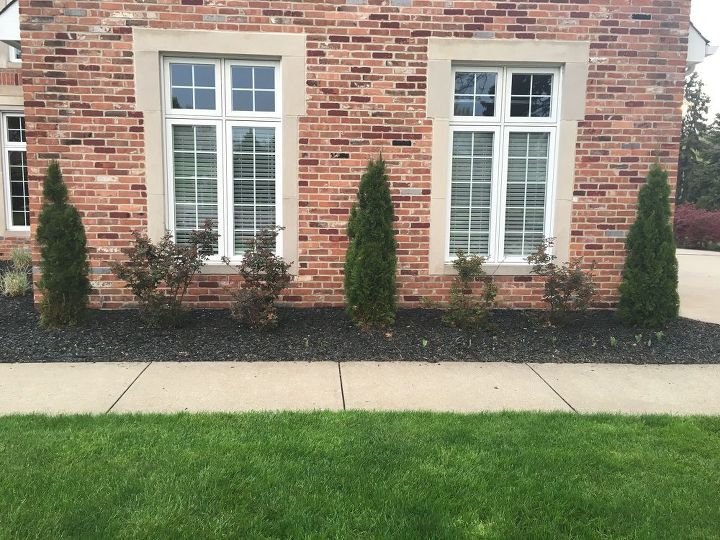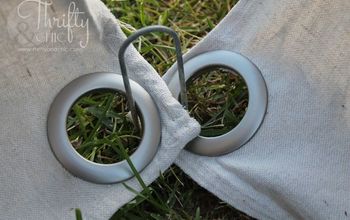How to prune hydrangea?
Related Discussions
GNATS - How to get rid of them?
Somehow my house and garden got tiny gnats that killed my fuchsia plant and fly everywhere. I have tried ALL the Web recommendations - soap and oil dishes, sand in th... See more
Marigolds growing! Should I pinch the buds?
My marigold plants are growing. I heard that pinching the buds until Autumn will allow them to grow without killing the plant. Is this true?
Growing garlic
Growing our first garlic, should we wait until the leaves are drying out before we pick it? Husband picked first one today along with our first potatoes.
How to keep mice out of your garden?
Hi everyone, I have mice in my garden destroying my vegetables and I have also noticed them in the barn and shed. Please can someone tell me how to prevent them from ... See more
What's the best flower/plant to grow in Texas?
I know that opinions vary, but what's your opinion?!I have great luck w Rosemary plants. Green all year long.
Which annual flowers make a colorful border for my house?
This year I am going to plant a colorful border using annuals. What annuals have you used or do you recommend for a border? The area is full to part sun. I am not ... See more
Is it safe to replant peony?
I've heard it might be tricky. Is it true? What is the best way to that? It's this year's plant. No flowers yet.





https://www.finegardening.com/article/pruning-hydrangeas
Hope this helps you
https://growbeautifully.monrovia.com/when-to-prune-hydrangeas/
https://thekitchengarten.com/why-and-how-to-prune-hydrangeas/
Use Method One if you have mophead or lacecap hydrangeas (these are the only type hydrangeas that are usually blue or pink) or if you have oakleaf hydrangeas (leaves shaped like large oak leaves, white blooms).
Use Method Two if you have paniculatas (PeeGees) or 'Annabelle' (arborescens). Both PeeGee and smooth hydrangeas bloom white.
Before pruning, be sure to know what type of hydrangea you have.
When Cutting Back Hydrangeas Can Be Helpful:
(1) All dead stems should be removed from hydrangeas every year.
(2) After the plants are at least 5 years old, about 1/3 of the older (living) stems can be removed down to the ground each summer. This will revitalize the plant.
Method I
Prune these hydrangeas only in the summer before August (to be safe). Some experts believe these hydrangeas may be pruned even into August, but this might be risky. The hydrangeas may already have set their bloom buds for the next year.
Method I is for hydrangea types that bloom on old wood. "Old Wood" are stems that have been on the hydrangea since the summer before the current season. "New wood" are stems that developed on the plant during the current season. This group of hydrangeas produce flower buds on hydrangea stems around August, September or October for the following summer's blooms. If those stems are removed (pruned) in the fall, winter, or spring, the bloom buds will be removed, and there may be little or no bloom the following summer (usually June/July for the northern hemisphere).
Note that pruning is not the same thing as removing the dead blooms. (See below "Removing Old Blooms.") There exists a small group of mophead hydrangea that will bloom no matter when they are pruned. Endless Summer is this type of hydrangea. But for the vast majority of hydrangeas, pruning after July will likely result in fewer blooms the next summer.
EXCEPTIONS: For all mophead hydrangeas, the above method of pruning (Method I) will work very well. However, one may become confused when a neighbor or friend prunes his or her hydrangea at the "wrong" time, i.e. in the fall or spring, and then his hydrangea blooms just fine.
Unlike most mophead hydrangeas, there are a few that will regenerate the bloom buds they are cut off (destroyed). These hydrangeas are known as 'remontant'. They seem to be found most abundantly in gardens in the northern regions of the U.S. and Canada. Therefore, on these special hydrangeas, if the bloom buds are killed by frost or pruned off at the wrong time, they will regenerate the bloom bud and bloom as usual. Endless Summer is the best example of a hydrangea that does this.
Pruning Paniculata (PG) & Smooth Hydrangeas
Method II
This method is used for hydrangea arborescens, smooth hydrangeas, and hydrangea paniculata (PeeGee types) hydrangeas. These types of hydrangeas bloom on new wood (new stems). It is a joy to grow these type hydrangeas because they are determined to bloom every single year, no matter how they are treated. The only time they cannot be pruned is in the spring ('Annabelle') or in the summer (PG) when they are preparing to bloom.
Many people grow hedges with smooth hydrangeas and cut them within a few inches of the ground each fall so they will not be an eyesore during the winter. They will still bloom beautifully in the spring/summer, however this drastic pruning may not allow stems to increase in size, and they may need staking to hold up the large heads.
Paniculatas (PG/Limelight types) can be pruned in the fall, winter, or spring. However, it is not necessary to prune them every year. It is suggested that one trim out crossing branches and those that do not contribute to an attractive form whenever necessary.
Paniculata hydrangeas are the only hydrangeas that can be pruned into a tree-form. If one is attempting to grow a paniculata as a tree, the developing trunk and main top branches should not be removed. If a panicultata that is trained into a tree-form is cut or broken off close to the ground, it will grow back as a shrub unless the training and pruning is started again from the new shoots. Removing old blooms on a plant is called "Deadheading." Fortunately, we can remove the old blooms at any time of the year without harming the bloom for the following year. In June and July you may remove them in any way you would like (long stems or short stems). Here are some tips for deadheading:
(1) When you cut blooms for arrangements in June or July, you can cut them with long stems because the bloom buds haven't set for the following year.
(2) When you cut the blooms after the first of August, it would be safest to remove them with very short stems so you won't disturb any developing bloom buds for next year. As long as you cut above the first set of large leaves, the blooms will be fine.
Good luck!
Here's a helpful post on how and when to prune hydrangeas: https://www.hgtv.com/outdoors/flowers-and-plants/trees-and-shrubs/hydrangea-care-to-prune-or-not-to-prune-your-hydrangeas